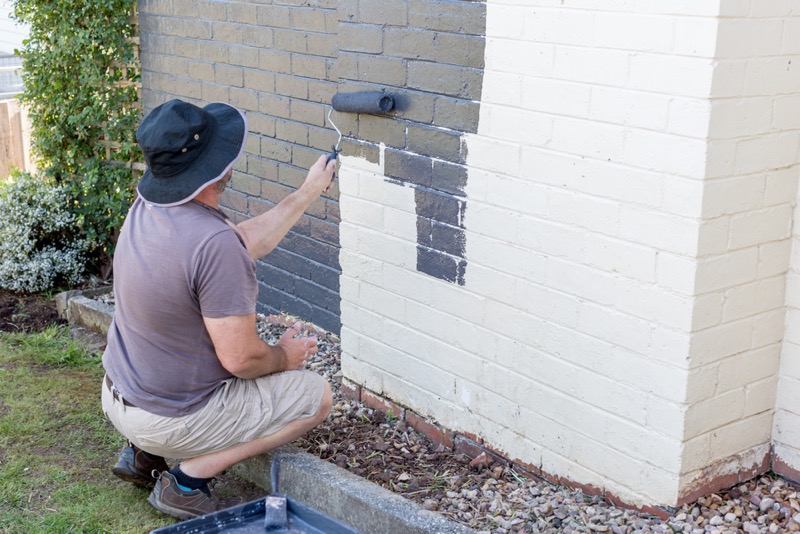Applying fresh paint is ideal for boosting your home’s curb appeal. If you’re planning a renovation project soon to make improvements to your home, make sure you’ll include the exterior as well. Remember that the external façade of your home is the first that people see, so if the current paint is starting to peel or looks out of date, a painting job is worth considering.
Applying a coat of exterior paint can effectively give your home an awesome transformation, boosting curb appeal while increasing the resale value if you intend to sell soon. Even if you don’t plan to sell your home in the future, an exterior paint job serves as an extra layer of shield against the elements. Aside from the main paint for the exterior, you should also invest in the best front door paint to ensure a seamless look.
Painting the exterior elements of a house can be a challenging task but consider it a worthwhile activity. Although you need to invest in several must-have tools and materials for the painting job, handling the task can help save money, prolong the lifespan of your home’s exterior, boost the value and give it a fresh look. Here are several insightful tips on painting your home’s exterior to keep in mind.
1. Always Stay Up To Date With The Weather Conditions
Always check the weather first, even if you’re excited to start your painting job. If the weather looks like it’s going to rain, it’s best to reschedule your painting job.
It’s not best to start your painting project under direct sunlight. Under such conditions, the heat allows the paint to dry up rapidly, making it hard to avoid the formation of lap marks, which can result in blistering and peeling. It’s also best to avoid painting on windy days. Strong winds can cause the paint to dry rapidly and allow debris and dirt to adhere to the wet paint.
2. Select The Right Paint Color And Amount
The right paint color can improve your home’s curb appeal, especially if it complements the structural details and fits in well with the neighborhood. It’s achievable by choosing the right paint colors.
If you find selecting suitable exterior painting choices challenging, you can check out brochures so you’ll have an idea of the choices available. Most stores nowadays have staff who can assist you in choosing the color combinations.
Once you have shortlisted the paint colors of your choice, it’s best to purchase a small amount or quart of the colors and check how they look after painting them on a small section of your home. If you don’t like the appearance, look for other colors. As for the amount of paint, you need a rough measurement of your home, including the surface type. Don’t forget about the doors and windows.
The quality of the paint also matters. Choosing a good quality brand that your budget allows may be best. Most of the top-quality paints on the market ensure better coverage, are easier to apply, and last longer. If you want a surface that’s easier to clean and more resistant to fading, go for a paint finish texture with a slight sheen.
3. Choose Good-Quality Painting Tools
If you want to ensure the best outcome, make it a priority to invest in good quality tools. The first on your list are brushes with synthetic bristles. The brushes will come in handy once you apply the latex paint. Make sure you get a standard size with straight bristles for painting on wide areas and a smaller brush for small areas.
When the exterior of your home is stucco, shingles, or brick, go for a roller, especially if working in large areas. The standard-size rollers are ideal for flat, expansive surfaces. Don’t forget to get a roller in a smaller size to cover narrow areas easily.
4. Know The Proper Painting Technique When Using A Paintbrush
Knowing the right painting technique is one way to paint your home’s exterior. Doing so will ensure the best outcome of your project. Dip the bristles of your brush up to two inches deep into the paint. Make sure you carefully slide the brush in a back-and-forth motion against the sides to allow the surplus paint to flow into the can.
After removing the excess paint, position your brush on the area you’ll be painting. Apply the paint in thick layers by performing two to three back-and-forth strokes. At this point, there’s no need to smoothen the layer yet. Once done, dip the brush into the paint and repeat until you’ve covered enough space.
Proceed to smoothen the paint, but you’ll no longer dip the brush into the paint can. Execute long strokes in a sweep-like motion with your brush, starting from the unpainted section and moving toward the painted area. Make sure you lift the brush while it’s moving at the end of every stroke.
Final Thoughts
An exterior paint job can be challenging if it’s your first time. Luckily, with the help of these valuable insights in exterior painting, it can guide you along the way in ensuring the best results. The right paint and technique will make your home stand out and be well-protected from the elements for years to come.

